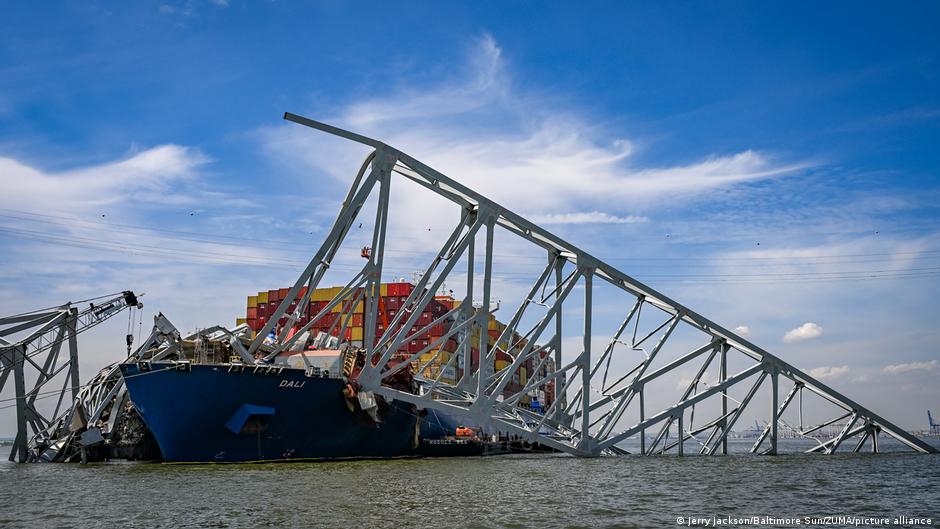US investigators on Tuesday concluded their probe of the collapse of the Francis Scott Key Bridge last year, where six construction workers were killed. The bridge collapse took place after it was struck by a malfunctioning container ship that had lost course.
According to the National Transportation Safety Board (NTSB), the probe found “probable cause” that disaster was caused by the ship’s loss of electrical power, due to a loose signal wire connection.
The Singapore-flagged container ship, dubbed Dali, crashed into the Francis Scott Key Bridge over the Patapsco River in Maryland on March 26, 2024, while six construction workers were on the bridge. The workers did not recieve advanced warning of the ship’s electrical failure and the impending collision.
What happened to the ship?
The NTSB found that the loosening of an electrical wire was the reason why the ship experienced the two catastrophic blackouts and subsequent loss of propulsion and steering.
The electrical wire came loose due to a design flaw in the specific wire metal sleeve that was meant to ensure the wire’s insertion into the electrical terminal. An NTSB video animation, posted on the agency’s X account, showed how the wire’s labeling band overtook the metal sleeve, preventing the wire from fully connecting and eventually causing it to disconnect.
NTSB Chair Jennifer Homendy described investigators’ search for the wire to finding a single loose rivet on the Eiffel Tower. “It’s like finding a needle in the haystack,” she said.
Investigators, along with ship manufacturer HD Hyundai Heavy, tested thousands of wires to ultimately find the one that was faulty.
Workers were not notfied in time
The investigation also revealed that the six workers’ lives could have been saved, had they been notified immediately.
The time between that elapsed between police being notified to block traffic coming on to the bride and the collision was found to be one minute and 29 seconds.
Officials said the highway workers could have had enough time to drive to a portion of the bridge that did not collapse, if they had been notified in time.
Edited by: Elizabeth Schumacher

